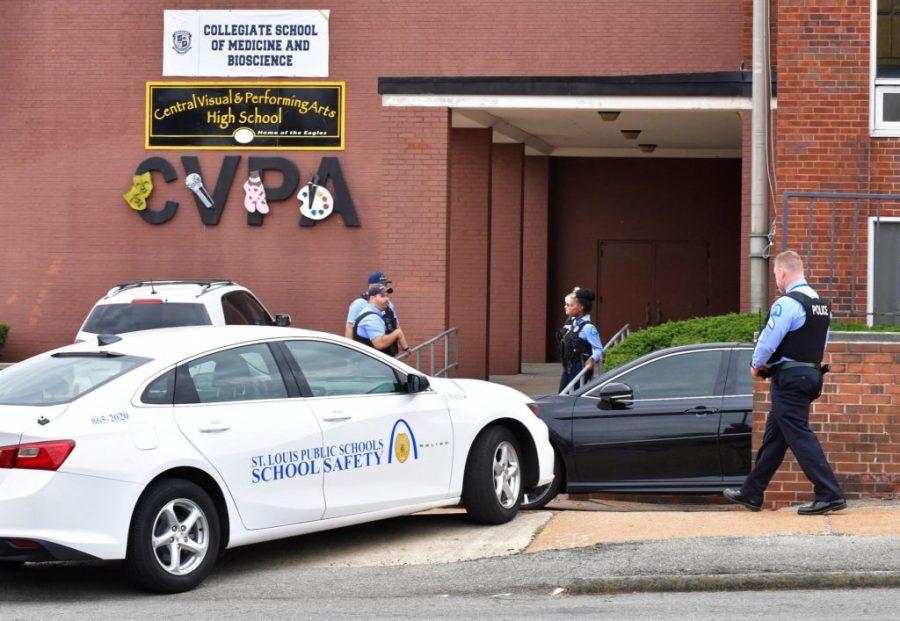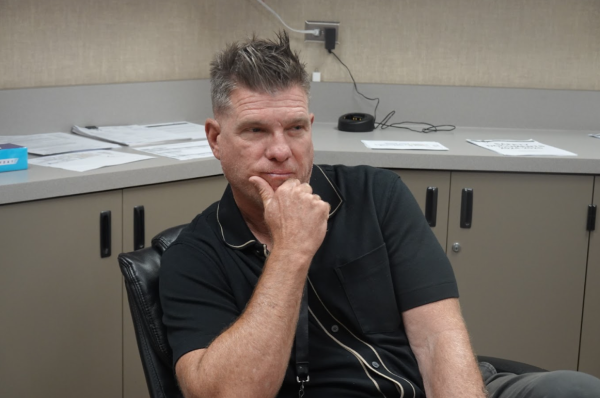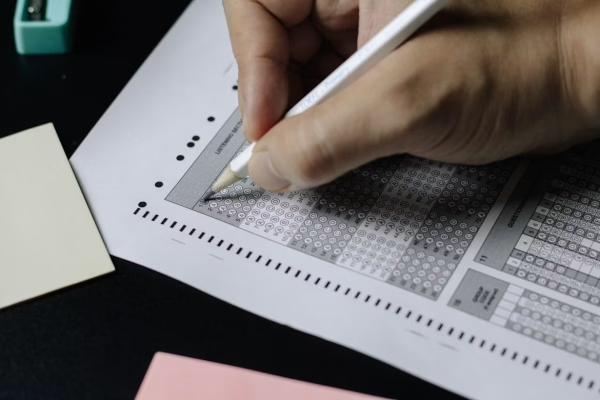Missouri School Shooting
St. Louis metropolitan police officers stand outside an entrance at the northeast corner of the Central Visual and Performing Arts High School after a shooting that left three people dead including the shooter in St Louis, Missouri on October 24, 2022. – Two people were killed on Monday and several were injured by a gunman who opened fire at a high school in the midwestern US city of St. Louis, police said. (Photo by TIM VIZER / AFP) (Photo by TIM VIZER/AFP via Getty Images)
On Monday, Oct. 24, a 19-year-old gunman killed a teacher and a 15-year-old student with an assault rifle in a shooting spree at a high school in St. Louis, Missouri. According to the St. Louis police commissioner, his parents called officers to the man’s home just nine days before the shooting to remove the AR-15 style rifle.
The St. Louis police commissioner had confirmed that shortly before the school shooting, officers were called to the man’s home by his parents, who were worried about his mental state and wanted the gun removed. His family told police they had planned for the teen to be treated for his mental health issues, had put him on medication, and had governed a stay in a mental health institution. However, a police statement obtained by the St. Louis TV station KMOV records that officers believed that the teenager was lawfully permitted to possess the weapon despite substantial evidence of troubling behavior.
The tragedy in St. Louis underlines the difficulties with the employment of so-called “red flag” laws, which seek to take guns from people battling mental health and other problems. In June, Congress passed the first significant gun control bill in almost 30 years, which included tighter background checks on people aged 18 to 21, involving a review of mental health and juvenile records. In the St Louis case, KMOV said police were called to the gunman’s house at least six times, two of the call-outs for an accident and a suicide attempt.
Police say differences in state and federal gun possession laws tied their hands when Harris’ mother asked them to remove the gun on Oct. 15. They also point to a controversial new law in Missouri, now tied up in courts, called the Second Amendment Preservation Act, that claims state statutes override federal law concerning gun possession. For that reason, police say, they didn’t take Harris’ gun because they simply didn’t have the authority.
Under the Second Amendment Preservation Act, St. Louis police can only enforce federal laws if an existing state law is congruent with the federal law being enforced. The gunman left a note before his killing spree, complaining that he led an isolated life and calling his situation the perfect storm for a mass shooter, further proving his deteriorating mental state.
When he forced his way into the school, he had over 600 rounds of ammunition, some strapped to his body and his chest. He killed the student Alexandria Bell and Jean Kuczka, a PE teacher who was said to have tried to shield students from the gunfire. Seven students were wounded.
There have been 40 school shootings in the United States this year alone, resulting in injuries or deaths, according to a tracker created by Education Week, including the massacre at Robb elementary school in Uvalde, Texas, where 19 children and two teachers died. This year’s running total is more than the figure for an entire year since the database was started in 2018.
School shootings usually involve a mix of suicidal thoughts, depression, anger, and access to guns. Schools are the appropriate environment to identify students at risk and who are in despair. Just based on the events this past year, it’s clear that schools need to take action to make sure that violence can be prevented in the future.

Yasmin is a senior at Aliso Niguel High School; she’s delighted to write for the Growling Wolverine for her second year and advocate for fairness, balance,...






